 Folklore is full of stories of fierce mythical creatures. North America has Bigfoot or the Sasquatch, Nepal and Tibet have the Yeti, and Australia has the Yowie/Yahoo and water-dwelling Bunyip. Bunyip sightings have been reported since the early days of settlement, and today’s story is one of the first literary accounts of the creature. A foolish aboriginal hunter tries to kidnap a Bunyip cub, secure in the knowledge that he can out-run its clumsy mother on land. He learns too late that the mother has magic powers that will change his people forever. More…
Folklore is full of stories of fierce mythical creatures. North America has Bigfoot or the Sasquatch, Nepal and Tibet have the Yeti, and Australia has the Yowie/Yahoo and water-dwelling Bunyip. Bunyip sightings have been reported since the early days of settlement, and today’s story is one of the first literary accounts of the creature. A foolish aboriginal hunter tries to kidnap a Bunyip cub, secure in the knowledge that he can out-run its clumsy mother on land. He learns too late that the mother has magic powers that will change his people forever. More…
Archives
A Tale of the Tontlawald
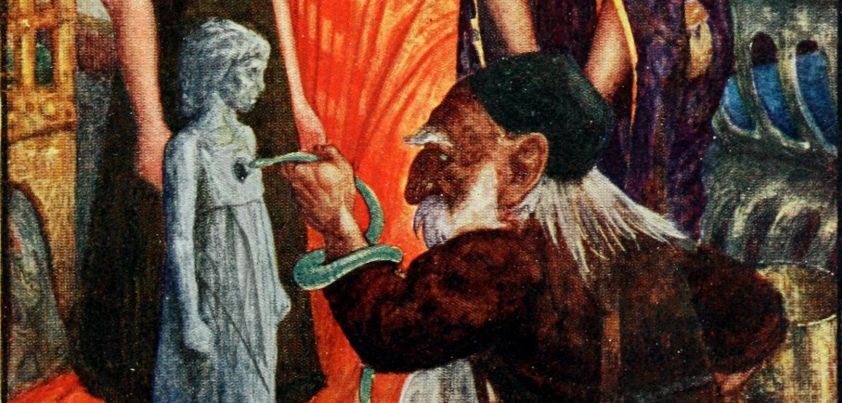 As is all too often the case in folk and fairy tales, the central plot here involves a young girl who is badly treated by a cruel stepmother, has a series of adventures, marries a handsome prince, and lives happily ever after. The big difference here is that the finds refuge and friendship in Tontlawald, a vast stretch of moorland on which no man ever dared set foot. To her surprise, she learns that it is a magical fairyland where people never age. When she outgrows the playmate who discovered her, she is told that she must leave. More…
As is all too often the case in folk and fairy tales, the central plot here involves a young girl who is badly treated by a cruel stepmother, has a series of adventures, marries a handsome prince, and lives happily ever after. The big difference here is that the finds refuge and friendship in Tontlawald, a vast stretch of moorland on which no man ever dared set foot. To her surprise, she learns that it is a magical fairyland where people never age. When she outgrows the playmate who discovered her, she is told that she must leave. More…
Diamond Cuts Diamond
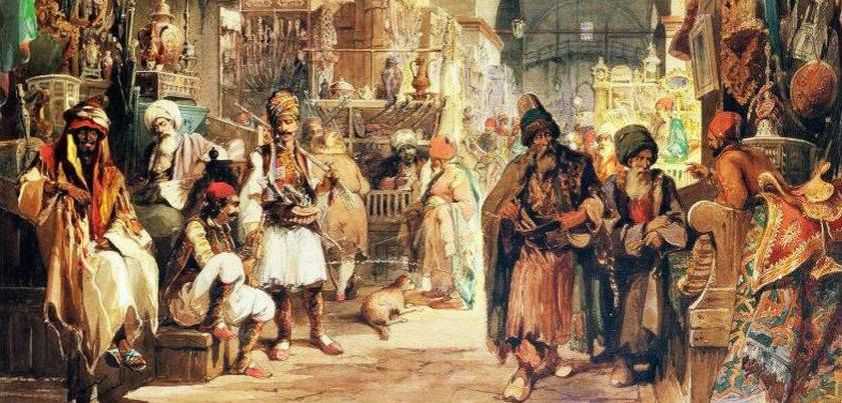 In this Indian folktale, a man travels to a distant land to seek his fortune. He succeeds and decides to convert his riches to jewels and return home. As he nears home, a ‘friendly’ merchant warns him that there are robbers on the road ahead. The traveler leaves his jewels in the care of the merchant. He then travels home to hire men to help him get the jewels through safely. On his return, the merchant tries to cheat him. To get the jewels back, the traveler needs help from someone who is even better at cheating than the merchant. More…
In this Indian folktale, a man travels to a distant land to seek his fortune. He succeeds and decides to convert his riches to jewels and return home. As he nears home, a ‘friendly’ merchant warns him that there are robbers on the road ahead. The traveler leaves his jewels in the care of the merchant. He then travels home to hire men to help him get the jewels through safely. On his return, the merchant tries to cheat him. To get the jewels back, the traveler needs help from someone who is even better at cheating than the merchant. More…
Fairy Ointment
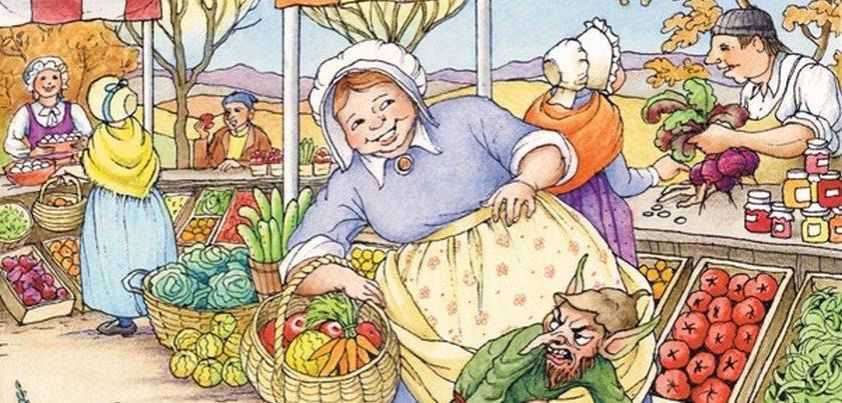 In this folktale, a strange looking little old man asks a nurse to come to his house to help his sick wife look after their baby boy. The man’s wife gives the nurse some ointment to put on the baby’s eyes. Being curious, the nurse puts some of it on one of her own eyes. The family seemed normal enough up to this point. However, the ointment helps her to learn their secret. The nurse pays a heavy price for her actions when the old man finds out what she has done. More…
In this folktale, a strange looking little old man asks a nurse to come to his house to help his sick wife look after their baby boy. The man’s wife gives the nurse some ointment to put on the baby’s eyes. Being curious, the nurse puts some of it on one of her own eyes. The family seemed normal enough up to this point. However, the ointment helps her to learn their secret. The nurse pays a heavy price for her actions when the old man finds out what she has done. More…
The Three Wonderful Beggars
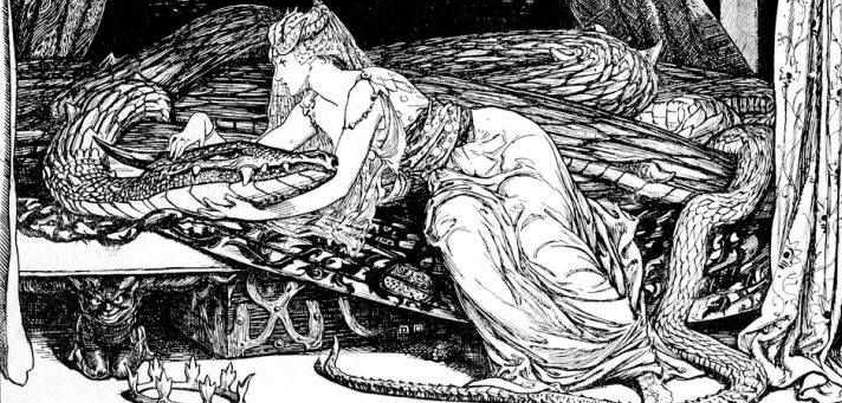 In this Serbian folktale, a young girl stops her rich but cruel father from setting his dogs on three old men who come begging to his door. The old men are not really beggars, but fairies. They foretell that a baby boy in a nearby village will one day own all the rich man’s money and land. The rich man learns this and tries several times to kill the boy. However, he boy survives and the fairies’ prophesy comes true. As a final punishment, the rich man must work forever in a job that is much worse than begging. More…
In this Serbian folktale, a young girl stops her rich but cruel father from setting his dogs on three old men who come begging to his door. The old men are not really beggars, but fairies. They foretell that a baby boy in a nearby village will one day own all the rich man’s money and land. The rich man learns this and tries several times to kill the boy. However, he boy survives and the fairies’ prophesy comes true. As a final punishment, the rich man must work forever in a job that is much worse than begging. More…
The Two Frogs
 This Japanese folktale teaches some important lessons. Two frogs from different cities set off on a journey, each wanting to visit the other’s city. They meet on a mountaintop halfway and accidentally look back at their own city, thinking it their destination. Deciding that the two cities look the same, they each return home. Possible morals: 1) If you really want to do something, learn all you can about it before you start; and 2) Don’t look for reasons to give up in the middle of something important. They are too easy to find and you may be sorry later. More…
This Japanese folktale teaches some important lessons. Two frogs from different cities set off on a journey, each wanting to visit the other’s city. They meet on a mountaintop halfway and accidentally look back at their own city, thinking it their destination. Deciding that the two cities look the same, they each return home. Possible morals: 1) If you really want to do something, learn all you can about it before you start; and 2) Don’t look for reasons to give up in the middle of something important. They are too easy to find and you may be sorry later. More…
The Jogi’s Punishment
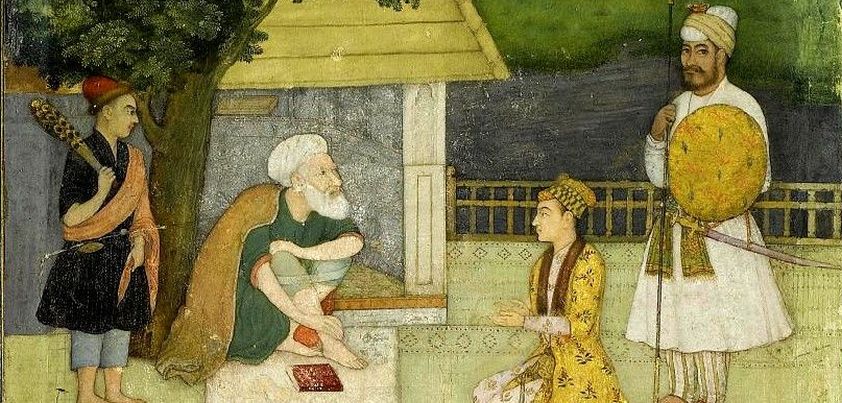 The moral of this Indian folktale appears to be that evil will always receive the punishment it deserves. We have a famed holy man who turns out to be not very holy after all, a selfish, gullible rajah who wants to keep the holy man’s talents and blessings all for himself, and an overly curious princess who disobeys her father’s order not to leave the palace grounds. We aren’t told much about the “gallant young prince of Dilaram” but he, too, must have done something wrong to be punished with the disobedient princess as a wife. More…
The moral of this Indian folktale appears to be that evil will always receive the punishment it deserves. We have a famed holy man who turns out to be not very holy after all, a selfish, gullible rajah who wants to keep the holy man’s talents and blessings all for himself, and an overly curious princess who disobeys her father’s order not to leave the palace grounds. We aren’t told much about the “gallant young prince of Dilaram” but he, too, must have done something wrong to be punished with the disobedient princess as a wife. More…
A Fish Story
 Although this story was described as an “Australian” folktale when published in 1910, Australia is too young a nation to have folktales of its own. This is an adaption of an Australian aboriginal myth. Like those of many ancient cultures, it tries to explain the meaning of every-day things: in this case, how fish got into rivers and why rivers always feel warmer if you swim in them on a cold day. According to the story, fish used to live and hunt on the land and only came to live underwater because of an accident lighting a fire. More…
Although this story was described as an “Australian” folktale when published in 1910, Australia is too young a nation to have folktales of its own. This is an adaption of an Australian aboriginal myth. Like those of many ancient cultures, it tries to explain the meaning of every-day things: in this case, how fish got into rivers and why rivers always feel warmer if you swim in them on a cold day. According to the story, fish used to live and hunt on the land and only came to live underwater because of an accident lighting a fire. More…
The Heart of a Monkey
 In this Swahili folktale, a monkey accepts the offer of a ride on a shark’s back to see the wonders under the sea. Once at sea, the monkey learns that the real reason for the trip is that the shark king needs a monkey’s heart to cure an illness. The monkey tricks the shark into returning. He then explains the trick by telling a story about a donkey, a hare, and a lion. One of the animals kills another. The third animal cooks it, but tells the killer there is no heart. Can you match the animals to the outcome? More…
In this Swahili folktale, a monkey accepts the offer of a ride on a shark’s back to see the wonders under the sea. Once at sea, the monkey learns that the real reason for the trip is that the shark king needs a monkey’s heart to cure an illness. The monkey tricks the shark into returning. He then explains the trick by telling a story about a donkey, a hare, and a lion. One of the animals kills another. The third animal cooks it, but tells the killer there is no heart. Can you match the animals to the outcome? More…
The Shifty Lad
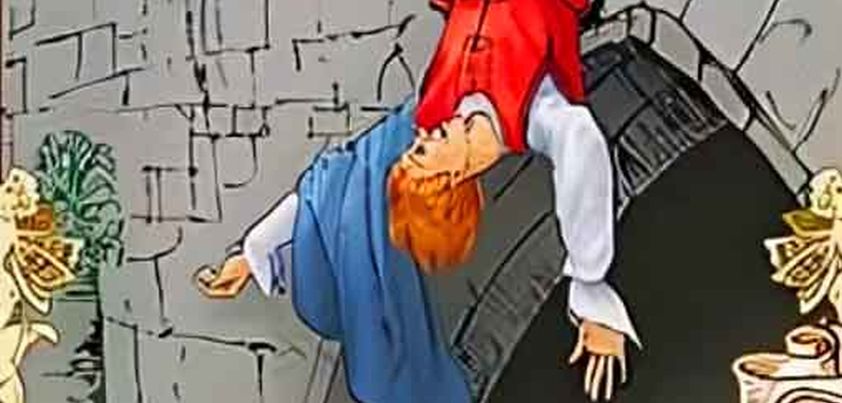 This Irish folktale is about a boy who likes to play tricks on people and wants nothing more than to grow up to be a thief. His mother warns him that if he does become a thief he will be caught one day and hang from the Bridge of Dublin. The boy does some rather terrible things on the way to becoming the most famous thief in the country. Luckily, there is still justice in some folktales and the Shifty Lad is soon lying dead under the Bridge of Dublin… but not for the reason his mother expected. More…
This Irish folktale is about a boy who likes to play tricks on people and wants nothing more than to grow up to be a thief. His mother warns him that if he does become a thief he will be caught one day and hang from the Bridge of Dublin. The boy does some rather terrible things on the way to becoming the most famous thief in the country. Luckily, there is still justice in some folktales and the Shifty Lad is soon lying dead under the Bridge of Dublin… but not for the reason his mother expected. More…
Bluebeard
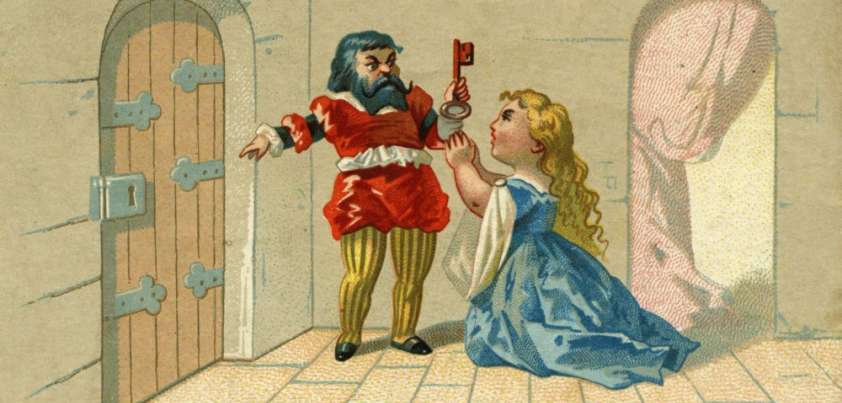 As in real life, many folktales have protagonists who attain riches and/or happiness by questionable means. Bluebeard, Charles Perrault’s serial killing nobleman, obviously deserves his fate. However, it is also hard to see how his last wife, who first rejected him based on his looks, seemingly only married him for his riches, and then betrayed his generosity and trust by entering a forbidden room, deserves a “happily ever after” future. Themes include judging by appearances, greed, vanity, betrayal of trust and justice. One question remains: if the beard made women and girls run away, why didn’t Bluebeard shave it off? More…
As in real life, many folktales have protagonists who attain riches and/or happiness by questionable means. Bluebeard, Charles Perrault’s serial killing nobleman, obviously deserves his fate. However, it is also hard to see how his last wife, who first rejected him based on his looks, seemingly only married him for his riches, and then betrayed his generosity and trust by entering a forbidden room, deserves a “happily ever after” future. Themes include judging by appearances, greed, vanity, betrayal of trust and justice. One question remains: if the beard made women and girls run away, why didn’t Bluebeard shave it off? More…
The Stonecutter
 This folktale from Japan is about a hardworking man who leads a poor but happy life until the day a mountain spirit decides to grant him several wishes. Predictably, his initial wish is for riches. When this does not satisfy, he craves power. He starts with power over man (as a prince), and moves on to power over nature (as the sun, a cloud, and a great rock on a mountainside). He is never satisfied until finally realizing that a humble stonecutter has as much power as anyone or anything on Earth. More…
This folktale from Japan is about a hardworking man who leads a poor but happy life until the day a mountain spirit decides to grant him several wishes. Predictably, his initial wish is for riches. When this does not satisfy, he craves power. He starts with power over man (as a prince), and moves on to power over nature (as the sun, a cloud, and a great rock on a mountainside). He is never satisfied until finally realizing that a humble stonecutter has as much power as anyone or anything on Earth. More…
The False Prince and True
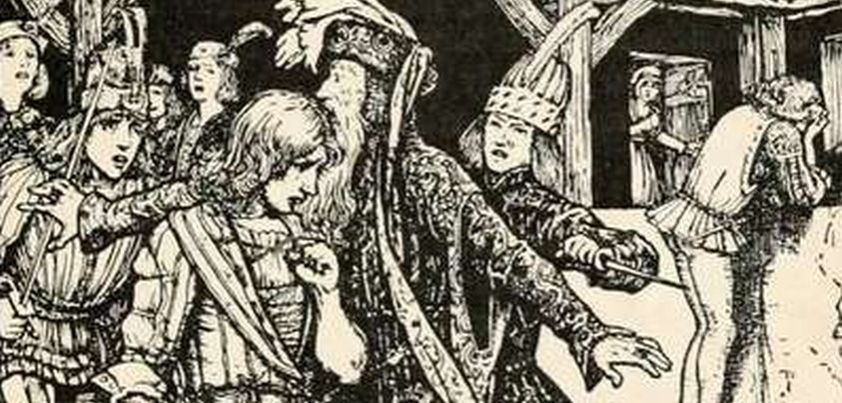 This Portuguese folktale begins with a king learning about an argument between his son and a young nobleman on a tennis court. The prince spoke rudely to the noble, who lost his temper and hit him. Although the king is angrier with his son for not fighting back than the noble, hitting the prince is punishable by death. The only way the noble can save himself is to marry a very ugly, very old woman. As is often the case in folktales, there is a lot of magic around and some surprises are on the way for all involved. More…
This Portuguese folktale begins with a king learning about an argument between his son and a young nobleman on a tennis court. The prince spoke rudely to the noble, who lost his temper and hit him. Although the king is angrier with his son for not fighting back than the noble, hitting the prince is punishable by death. The only way the noble can save himself is to marry a very ugly, very old woman. As is often the case in folktales, there is a lot of magic around and some surprises are on the way for all involved. More…
The Voice of Death
 In this Romanian folktale, a rich man thinks how terrible it would be to die and have to leave all of his money behind. He sets out to find a land where people do not die. Finally, he comes across a country where the word death is unknown. Instead of dying, people simply follow a strange voice and never return. The rich man is sure that he is strong enough to resist the voice. He moves there with his wife and family, only to learn the truth of the English idiom: Nothing is certain in life but death and taxes. More…
In this Romanian folktale, a rich man thinks how terrible it would be to die and have to leave all of his money behind. He sets out to find a land where people do not die. Finally, he comes across a country where the word death is unknown. Instead of dying, people simply follow a strange voice and never return. The rich man is sure that he is strong enough to resist the voice. He moves there with his wife and family, only to learn the truth of the English idiom: Nothing is certain in life but death and taxes. More…
The Frog
 Most ‘frog’ folktales involve a frog prince or at the very least a male frog. However, in this story from Italy, a female frog makes friends with a young man and helps him keep his mother happy as he searches for a wife. Little does the young man know that his perfect woman is sitting on a rock beside him. Three possible morals: 1) Sometimes we don’t appreciate those around us enough; 2) Often the thing we are looking for is right under our noses; 3) Or how about the English idiom beauty is only (frog) skin deep. More…
Most ‘frog’ folktales involve a frog prince or at the very least a male frog. However, in this story from Italy, a female frog makes friends with a young man and helps him keep his mother happy as he searches for a wife. Little does the young man know that his perfect woman is sitting on a rock beside him. Three possible morals: 1) Sometimes we don’t appreciate those around us enough; 2) Often the thing we are looking for is right under our noses; 3) Or how about the English idiom beauty is only (frog) skin deep. More…
The Master Thief
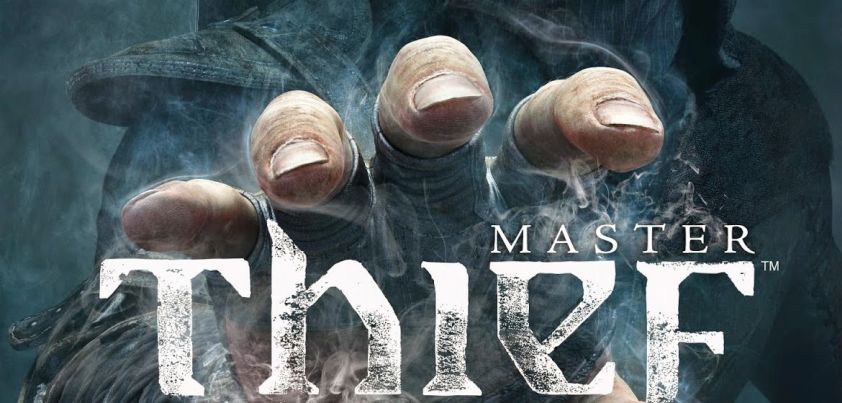 This Norwegian folktale is about a young man whose poor father sends him out into the world to earn a living. He joins a group of robbers, and is so good at stealing that he becomes their leader. The Master Thief returns home a rich man and decides to marry the Governor’s daughter. In order to marry the girl, he must prove how good a thief he is. This story goes against the English idiom: Crime doesn’t pay. The moral seems to be that crime does pay… but only if you are very good at it! More…
This Norwegian folktale is about a young man whose poor father sends him out into the world to earn a living. He joins a group of robbers, and is so good at stealing that he becomes their leader. The Master Thief returns home a rich man and decides to marry the Governor’s daughter. In order to marry the girl, he must prove how good a thief he is. This story goes against the English idiom: Crime doesn’t pay. The moral seems to be that crime does pay… but only if you are very good at it! More…